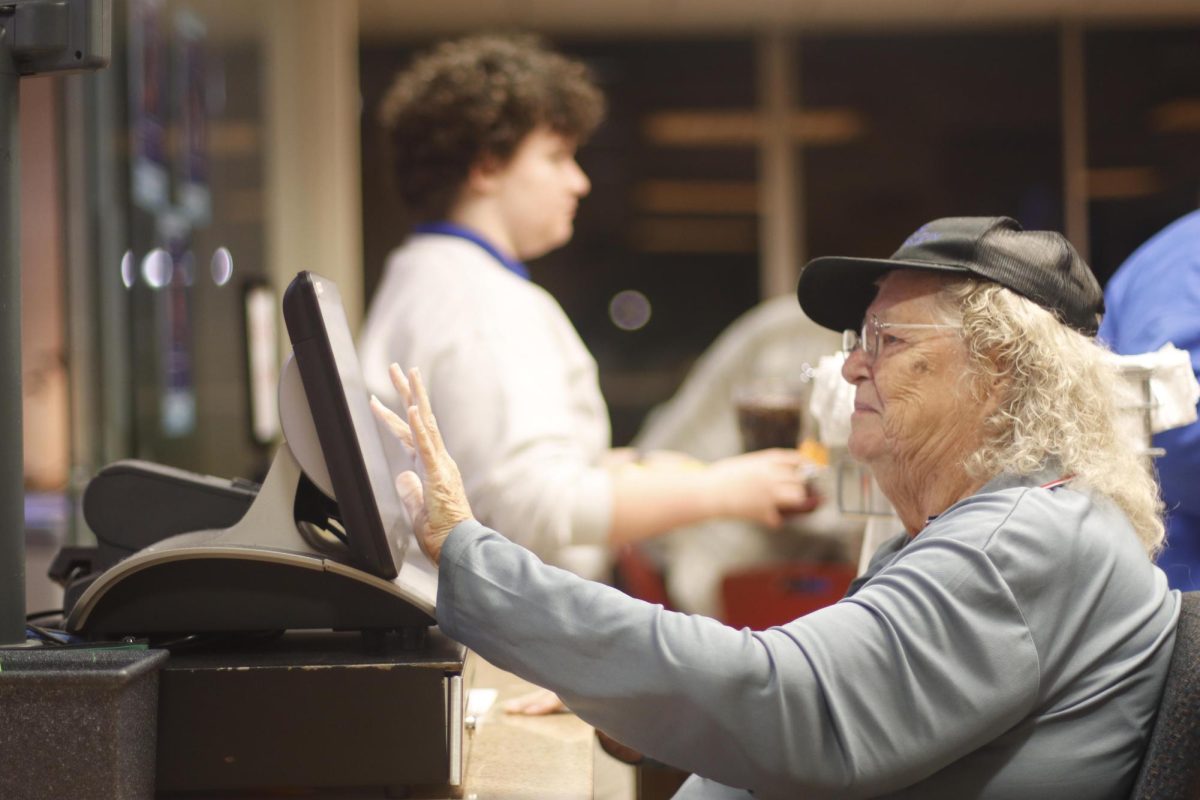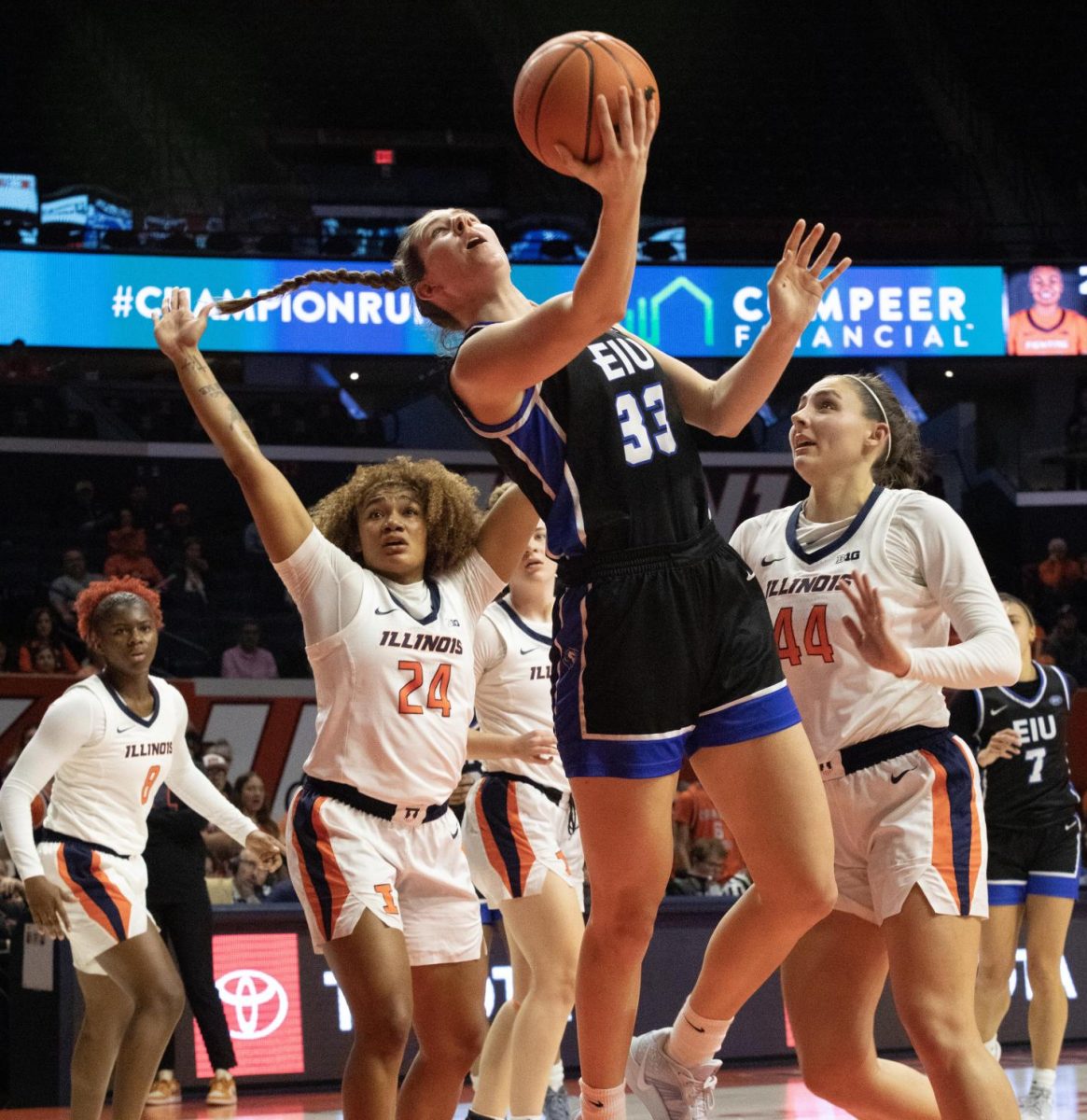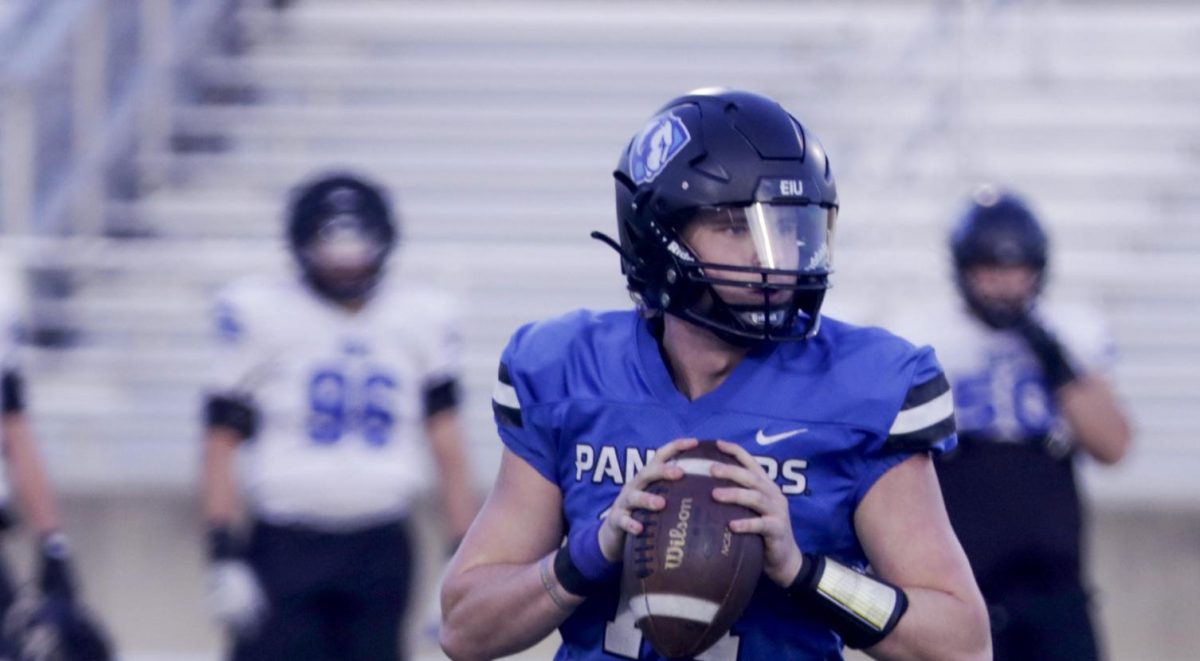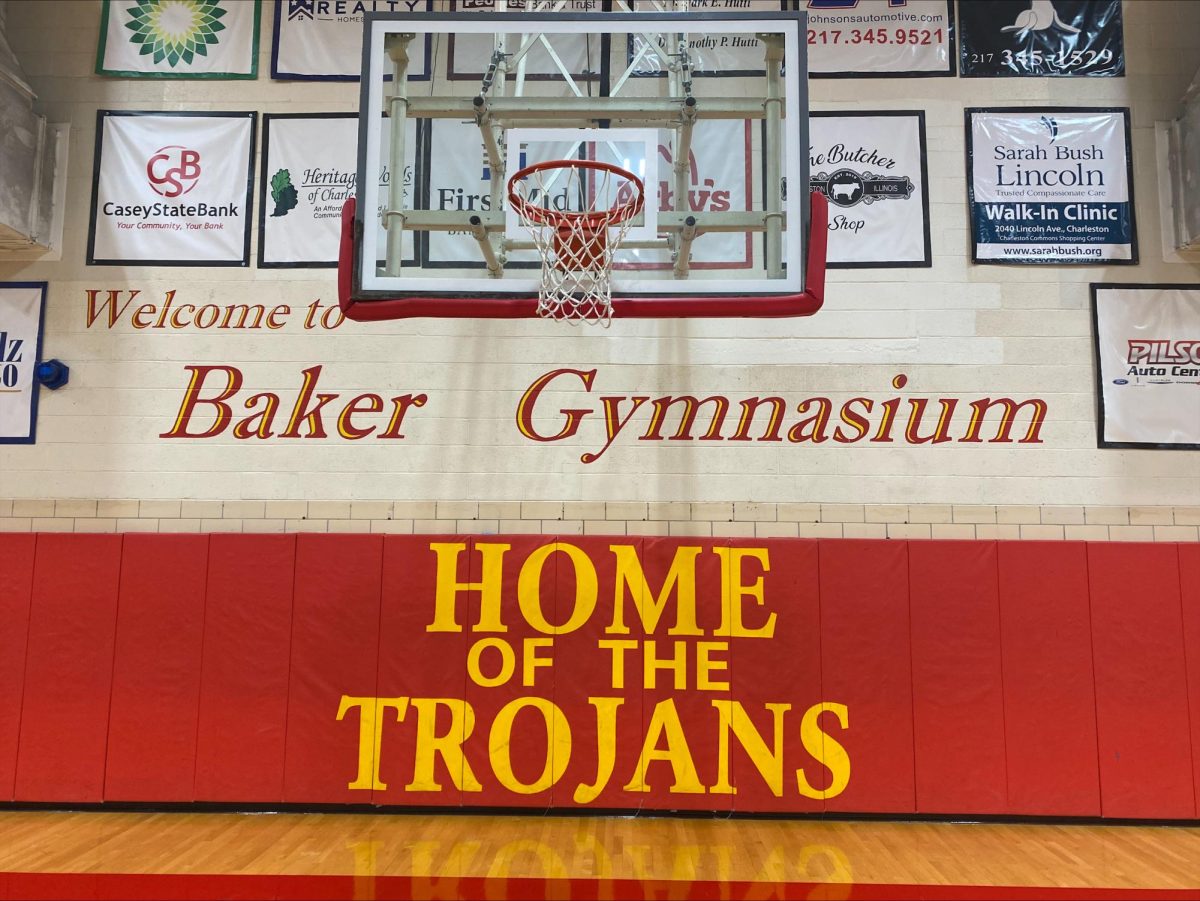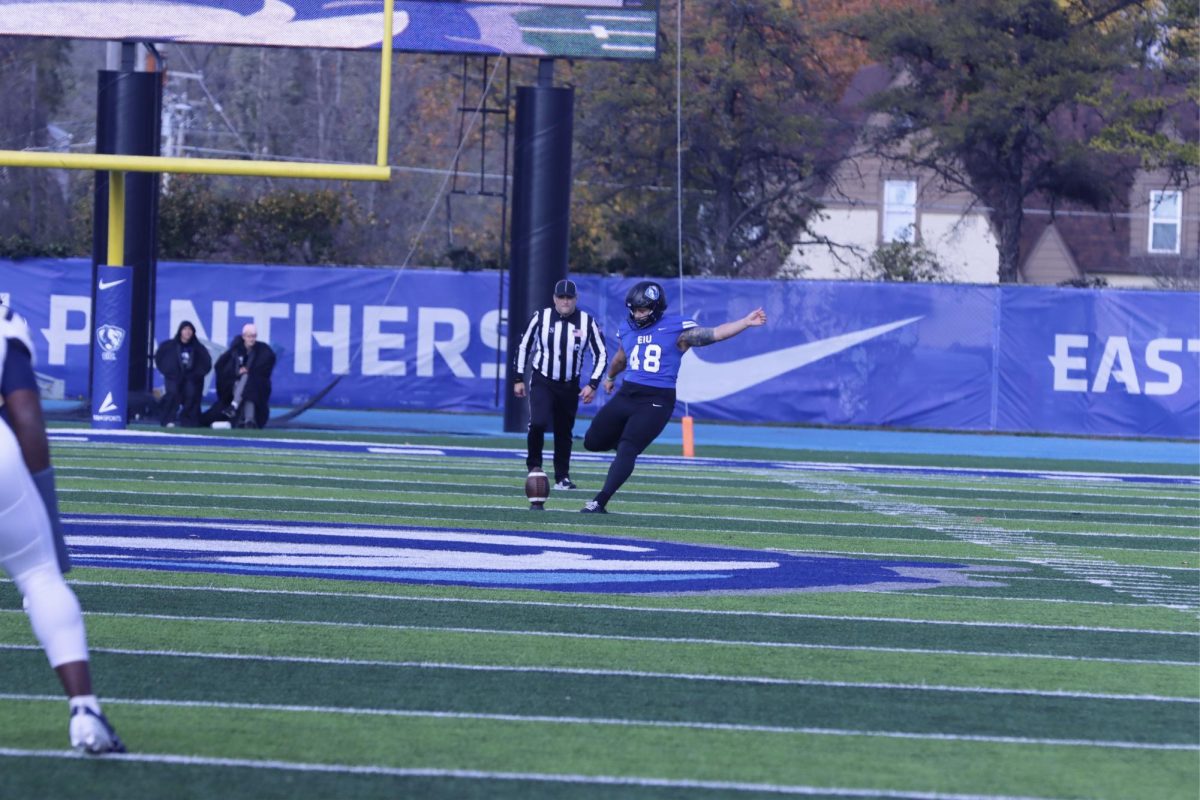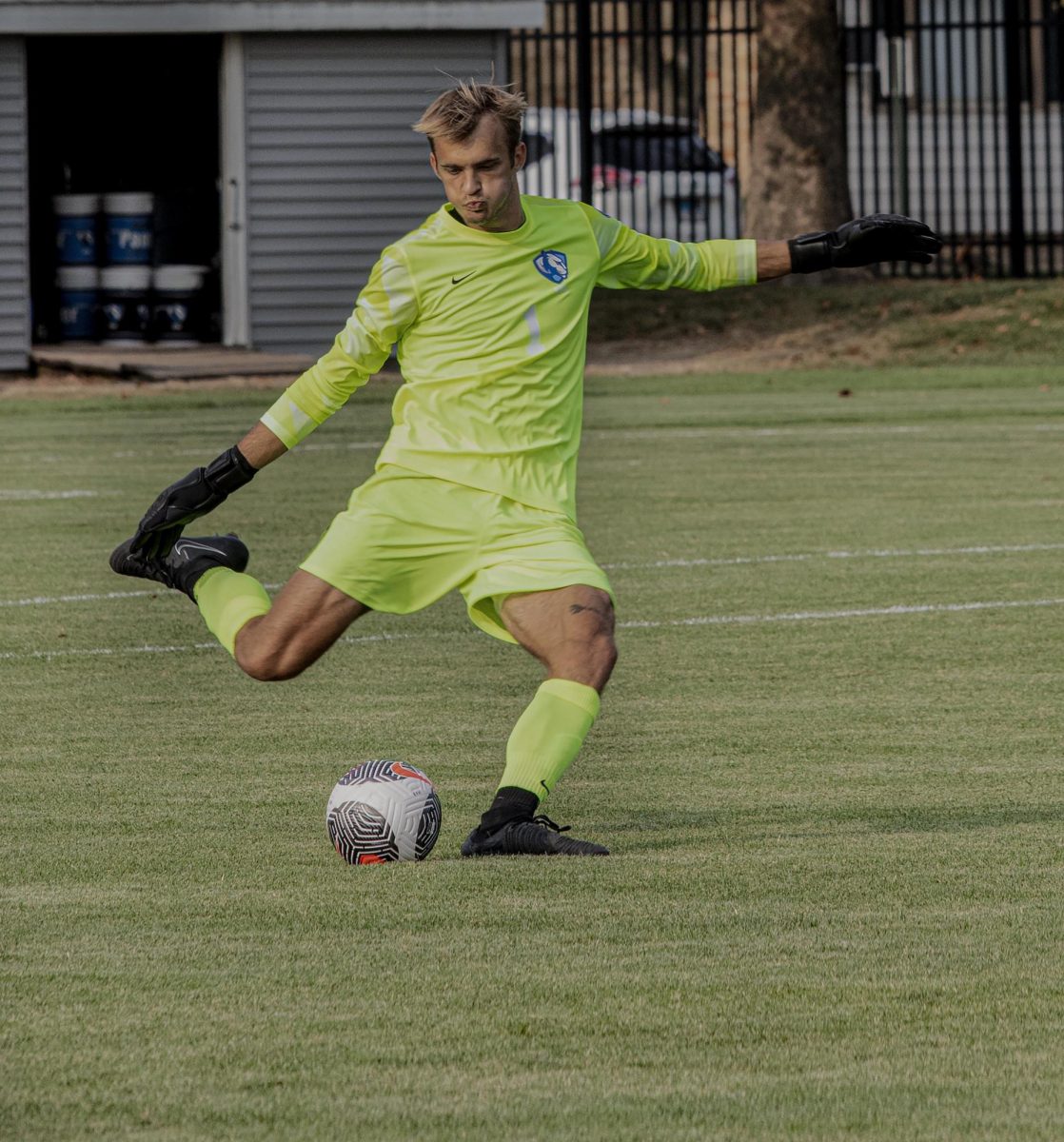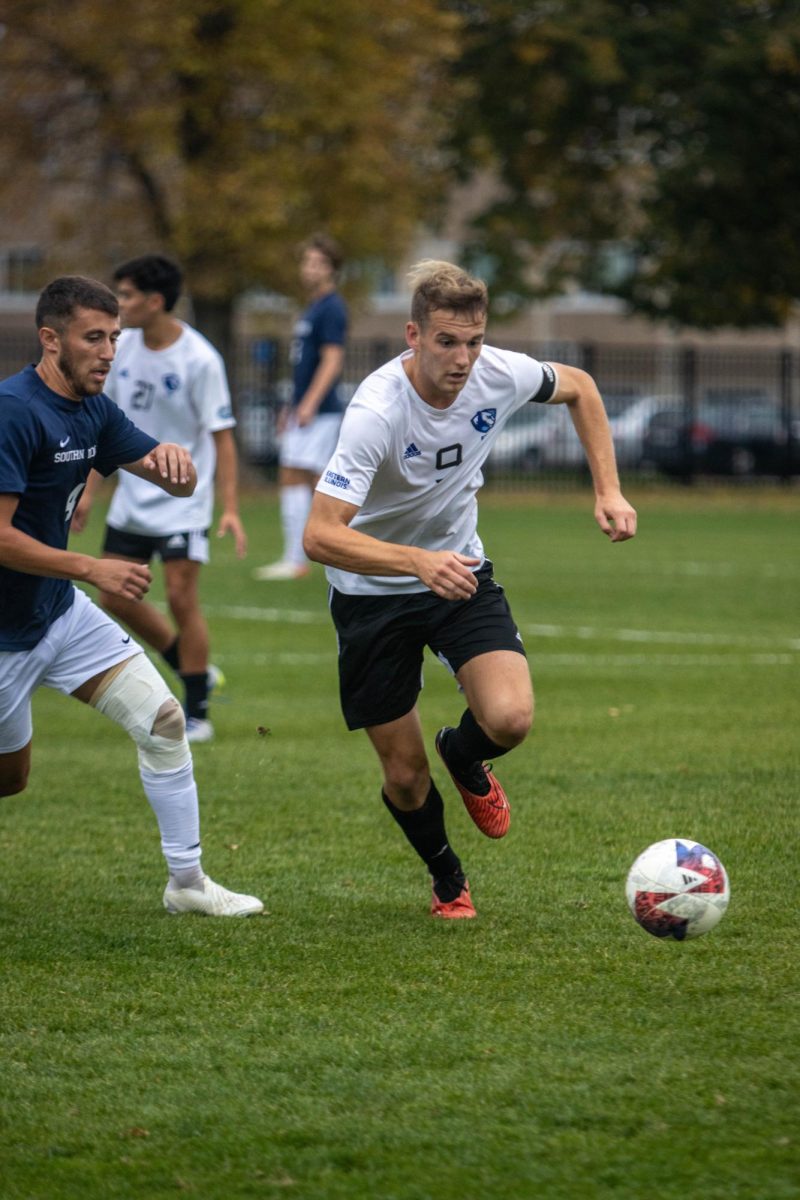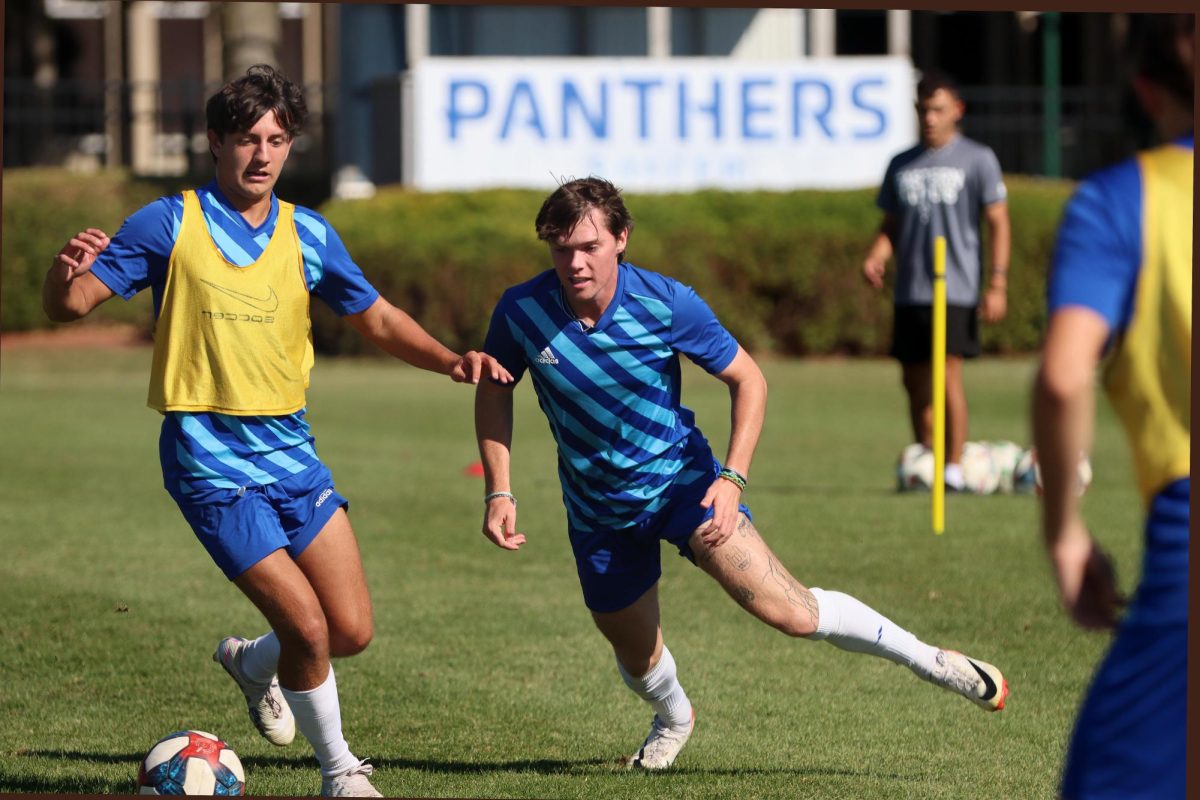Professor trades textbooks for Sais
Gustav Albear stood draped in a black karate outfit, twirling Sais around his arms.
Albear, a secondary education and foundations professor, has been studying karate since he was 7. He only talks with students about his hobby if they ask.
Otherwise, he doesn’t bring it up.
Albear lectured and demonstrated Tode-Jutsu and Kata with Wendy Williamson, the director of Study Abroad programs to nearly 30 students in the Martin Luther King Jr. University Union. The event was a part of Asian American Heritage month.
Tode-Jusu is the ancient word for karate, and Kata are the different forms of karate.
“Bascially, it is a medieval switchblade,” Albear said of the Sais.
Albear and Williamson lectured on the Okinawa style of karate called Naha-te and discussed the two systems of Naha-te, the Gojo-ru and the Uechi-ryu.
Albear said that the Gojo-ru is a more powerful system and the Uechi-ryu is based more on speed.
Karate forms have to be based on precision and rhythm, Albear said.
“You have to be a little old woman with a knitting needle,” he said.
Albear said every move is critical when performing karate and a little mistake can lose the impact of the move.
“When you drink something really cold too fast and you get that headache,” Albear said. “That’s the feeling people get when it’s done right to them.”
Albear also explained and showed the different weapons involved in karate, such as the Sai, the Bo and the Jo.
He said most of the weapons were not designed for karate, specifically. Rather, they were agricultural tools or tools used for fishing.
A Japanese clan called the Satsuma took over Okinawa and made a law saying that the people of Okinawa could not use weapons. As a means of protection, the people used whatever they could find as weapons for protection, Albear said.
Albear went into the different fighting postures of Kata. He demonstrated different stances, punches, strikes and kicks with Williamson.
Albear discussed the importance of energy while fighting an opponent. He said a constant energy needs to be kept to successfully fight someone.
“Everything becomes a state of soft tension,” Albear said.
He then demonstrated the different nerve and vascular strikes. The movie’s depiction of karate is not very accurate, he said.
Karate is a much more intimate style of fighting and the movies depict karate as a lot of punching and kicking, Albear said.
“You have to use nerve strikes, vascular strikes and joint locking,” Albear said. “That is real karate.”
Albear presented a variety of training tools that Senseis would use to instruct children. The key is keeping the body loose while performing karate moves.
“If I’m stiff,” Albear said, “I break.”





